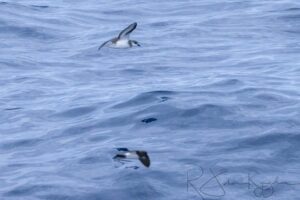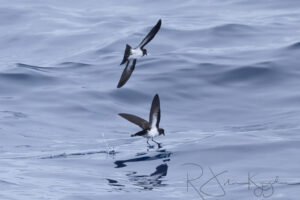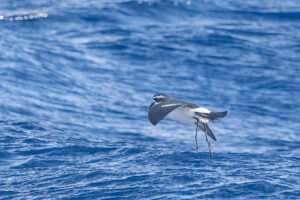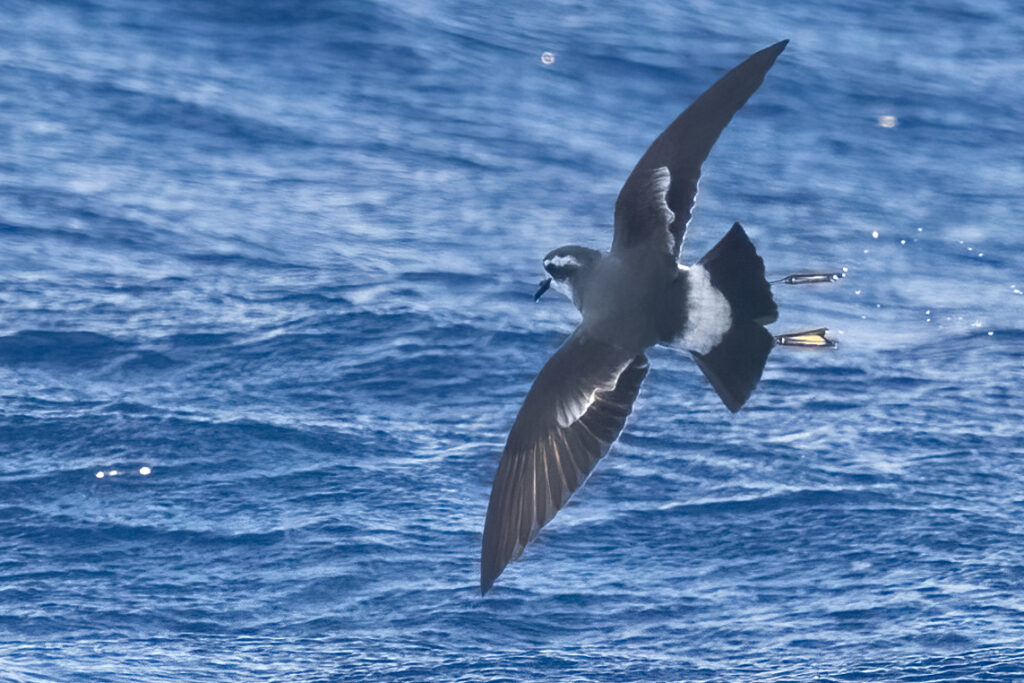Here’s an excerpt from Scott Brook’s summary of our trip to the Kermadecs. Its well
written and deserves recognition on this site.
“On Friday 26th March 2021, 13 very keen birders and 5 crew headed out of Tauranga onboard the mighty ‘Braveheart’ for an amazing 11 day pelagic seabird adventure to the rarely visited seabird mecca that is the New Zealand’s Kermadec Islands. Onboard were Scott Brooks (organiser), Tim Barnard, Harry Boorman, Dave Howes, Brent Stephenson, Sav Saville, Igor Debski, Richard Fenner, Phil Hammond, Steve Wood, Hennie Peters, Fraser Gurney and John Kyngdon.
The Kermadec Islands are located approx 800km north east of New Zealand and take approx 2.5 days to get to by boat. The string of tiny Islands are spread over 240km, and their isolation has made them the perfect location for literally millions of breeding seabirds.
As we headed north on the first day we saw many of the usual northern NZ petrels, shearwaters and albatrosses and also picked up our first great birds for the trip, Providence Petrel, Antarctic Prion, New Zealand Storm Petrel and Gould’s Petrel. On day 2 it was interesting to see the change in species as we left the mainland species behind and they were replaced with the more sub-tropical Black-winged and White-naped Petrels (which became the commonest species for our journey north).
On day 3 we reached our first chum spot, the Star of Bengal Banks (a famous fishing location). Prior to the trip I’d created a list of all the potential birds (including some hopefully new to NZ) that we may encounter with most being hugely unlikely but potentially feasible if conditions were right. The aim of the trip was to try out 5 different locations (at prominent seamounts and banks) well away from the main breeding islands to see if some of these outsider seabirds may be present in the area. The closest was the Star of Bengal Banks, and the furtherest was some seamounts 140km north east of Raoul island. Over the next few days we visited all 5 offshore spots and had some big chum ups, but interestingly they were all fairly quiet with mostly the local seabirds present (White-bellied Storm Petrel, White-naped Petrel, Kermadec Petrel, Wedge-tailed Petrel), but … these locations did deliver some of the best birds of the trip including multiple Gould’s Petrel, another Providence Petrel, a South Polar Skua and the highlight of the entire trip a stunning ‘MAGNIFICENT’ COLLARED PETREL, which came in briefly at the back of the boat displaying well.
The rest of the trip was spent around the various islands which are simply mind-blowing for the sheer volume of seabirds present. Here’s some of the highlights…
The first of the Kermadec Islands is a small rock in the middle of nowhere call L’Esperance Rock. This was our first real taste of the sub-tropical seabirds we would encounter around the breeding islands for the rest of the journey. Huge groups of Grey Ternlets were out feeding on the water or roosting on the rocks, with Black and Brown Noddies, Masked Boobies, Red-tailed Tropicbirds, White-bellied Storm Petrels, Kermadec Petrels, Gould’s Petrel and more also present.
After leaving L’Esperance for another offshore chum we then headed for Macauley Island (the second largest in the group). There is a small island just to the east called Haszard Island which is the only confirmed breeding location in the world of the very rare Kermadec Storm Petrel (estimated at approx 500 birds). This was one of the local species we most hoped to find, but as it was outside their breeding season (Aug to Dec) our chances were not that great. When we got to Macauley we circled slowly around the island surrounded with vast numbers of seabirds (including Red-tailed Tropicbirds, Masked Booby, Brown Noddys, Sooty Tern), often hovering just off the back of the boat – another truly spectacular place. After we went around the island we headed a few kms out to an underwater bank area hoping to see the Kermadec Storm Petrel. We hadn’t gone too long before Brent called Storm Petrel which was very likely a Kermadec but no-one really got onto it enough to confirm. We spent the next hour circling around the area until dark hoping to spot one amongst the 50 odd White-bellied Storm Petrels and thousands of other birds in the immediate area but sadly with no luck. We then set off towards Raoul Island.
As we arrived at Raoul Island (the largest island in the group) we could see a bunch of large slips which were the first indications of damage done by the two massive earthquakes that hit the Kermadec Islands in early March. Not many seabirds currently breed on Raoul (it has recently been cleared of all pests so that should change) so we headed for a bunch of islets that sits to just north east called the Meyer, Chander, Napier and Nugent Islands group (and NZ’s northern most point). Thankfully these small islets seemed to have fairly minimal earthquake damage from what we could see.
As we neared the Meyer Islands the volume of birds began increasing rapidly, and it wasn’t long before we could pick out our first glimpse of a Frigatebird hovering over an island and eventually we had a count of at least 43 Greater Frigatebirds! The most Frigatebirds previously seen together in New Zealand was about 16 so this was a huge increase. It wasn’t long before these massive black prehistoric looking birds were hovering all around as, swooping down gathering things from the water, and even picking off the odd wedge-tailed shearwaters (which luckily got away). An awesome experience to witness. Also up in a tree on Napier Island in the same spot that were first sighted in 2016 were a pair of Red-footed Boobies. While all this was going on there were literally hundreds of thousands of other seabirds feeding or flying around over and between all the little islet groups. Kermadec Petrels were everywhere, Grey Ternlets were having feeding frenzies with Black and Brown Noddies mixed in as well, and the occasional delightful White Tern making an appearance too. Masked Boobies and Red-tailed Tropicbirds came and went, and we even sighted a Wandering Tattler on the shore. This location really is unbelievably special and something none of us will ever forget.
Later we headed back down to Macauley Island again to try for the Kermadec Storm Petrel again but after 2 hours searching sadly our chances of finding one faded as the sun began to go down. But that’s when one of the greatest spectacles of the entire trip took place. As the sun set behind Macauley the silhouettes of a million or so seabirds that had returning at dusk to roost for the night were highlighted against the warm golden glow. The island looked like it had a swarm of mosquitos all over it as the seabirds buzzed around all everywhere and has to be one of the greatest things I’ve ever witnessed’. As Tim said ‘it warms your heart to know such places can still exist in the world’.
We had planned to stay around Macauley Island overnight to try for the Kermadec Storm Petrel the next morning but with a very unfavourable weather forecast ahead we decided it was best to start heading south to avoid some of the storm so as the suns glow disappeared we said goodbye to the Kermadecs Islands as this was the last time we would see them, before we head toward the impending storm. It looked like we’d have to save the Kermadec Storm Petrel for another time.
In the morning we woke to a nice fine day, and good news that the storm hadn’t developed and it was clear sailing from here on – great news! We were close the Star of Bengal Banks so thought we’d give it another shot there to see what might turn up. Several people had a go at fishing and pulled in a bunch of bass, groper, kingfish and trevally, while the rest of us looked for seabirds. We were once again back in black petrel, and grey-faced petrel country with black-winged and white-naped petrels coming through. Not much else was happening and with only about 1 hour left at out final chum spot excitement erupted when Igor, up on the helipad, called out KERMADEC STORM PETREL! … Everyones binos turned in the direction of the bird, which was a long way off, as it did a couple of jumps before disappearing quickly off into the distance. At last we had a confirmed sighting of this scarce bird – though unfortunately missed by 5 of the 13 people, including myself and Harry who is doing a ’Big Year’. After about half an hour Harry was still desperately staring at the open sea in vain for the tiny bird. With not much time left we decided to head up the chum trail to see if we could find it and boom, within 3 minutes we had it off the front of the boat. It then did a bunch of great passes alongside the ship, and this time everyone got to see it! A fantastic last minute addition for the trip. We then decided to hang around a bit longer and put out the rest of the chum out just as the wind rose to 20kn and it wasn’t long before we were surrounded by a mixed flurry of 200 black seabirds (Black Petrels, Grey-faced Petrels, Wedge-tailed Shearwaters and a Flesh-footed), as well as Kermadec Petrels, 3 Wandering Albatross and 3 Campbell Mollymawks all soaring around – a great spectacle, made even better when a Long-tailed Skua turned up and put on an amazing aerial display behind the ship, and the Kermadec Storm Petrel came back within a few metres of us for another fantastic farewell showing.
Then, sadly, we had to leave and begin our 2 day journey home.
During the trip we also had great encounters with some large pods of dolphins, but were surprised not to see any whales close by (although we did see several spouts). We often had sharks hovering off the back of the ship whenever we stopped – mostly these were schools of up to 10 Galapagos Sharks, but we also had a couple of good sized Hammerheads, a fiesty Mako, and a stunning Oceanic White-tipped Shark. And we had a Green Turtle at the Meyers.
Over the 11 days we saw an impressive 48 sea bird species, and a few shorebird and other bird species. We were very lucky to have favourable conditions for most of the journey with generally good steady winds and fine or overcast days. A fantastic result, outstanding seabirds, an awesome team of talented birders, and a super friendly and helpful ship’s crew all made this an unforgettable adventure for all onboard in this most wonderful of sea birding locations.
For me personally the award for the ‘Best Bird of the Trip’ goes to the Collared Petrel, the ‘Outstanding Performance Award’ goes to the Greater Frigatebirds, and without doubt the award for the ‘Most Dramatic Role’ goes to the Kermadec Storm Petrel.
Here’s the full list of seabirds we counted on the trip – this doesn’t include the million + seabirds we saw over Macauley, and the 500,000 + seabirds over the Meyer Island group. We had in the range of 2,000,000 + seabirds seen during the trip! Simply staggering. WHAT A PLACE!”







– – – – – – – – – – – – – – – – – – – – – – – – – –
1 x Royal Albatross (Southern)
2 x NZ Wandering Albatross (Antipodean)
2 x NZ Wandering Albatross (Gibson’s)
10 x NZ Wandering Albatross sp.
4 x White-capped Mollymawk
1 x Black-browed Mollymawk
12 x Campbell’s Mollymawk
1 x Antarctic Prion
1 x Fairy Prion
3 x Prion sp.
1,000 x White-naped Petrel
9 x Gould’s Petrel
50 x Cooks’ Petrel
1 x Pycroft’s Petrel
10,000 x Black-winged Petrel
1 x Collared Petrel (Magnificent)
10,000 x Kermadec Petrel
250 x Grey-faced Petrel
3 x Providence Petrel (Solander’s)
200 x Black Petrel
1 x White-chinned Petrel
1 x Sooty Shearwater
2,500 x Wedge-tailed Shearwater
100 x Flesh-footed Shearwater
150 x Buller’s Shearwater
30 x Fluttering Shearwater
1 x Little Shearwater
2 x Kermadec Storm-Petrel
1 x White-faced Storm-Petrel
25 x Wilson’s Storm-Petrel
2 x New Zealand Storm-Petrel
200 x White-bellied Storm-Petrel
5 x Common Diving Petrel
5 x Australasian Gannet
200 x Masked Booby
1 x Brown Booby
3 x Red-footed Booby
300 x Red-tailed Tropic Bird
43 x Greater Frigatebird
200 x Brown Noddy
500 x Black Noddy
15,000 x Grey Noddy (Ternlet)
40 x White Tern
100 x Sooty Tern
15 x White-fronted Tern
1 x South Polar Skua
1 x Long-tailed Skua
1 x Skua sp.
2 x Little Pied Shag
25 x Pied Shag
50 x Red-billed Gull
50 x Black-backed Gull
1 x Wandering Tattler
5 x Ruddy Turnstone
3 x Red-crowned Parakeet
2 x Kingfisher
1 x Welcome Swallow
1 x Pukeko
3 x Starling
1 x Song Thrush

